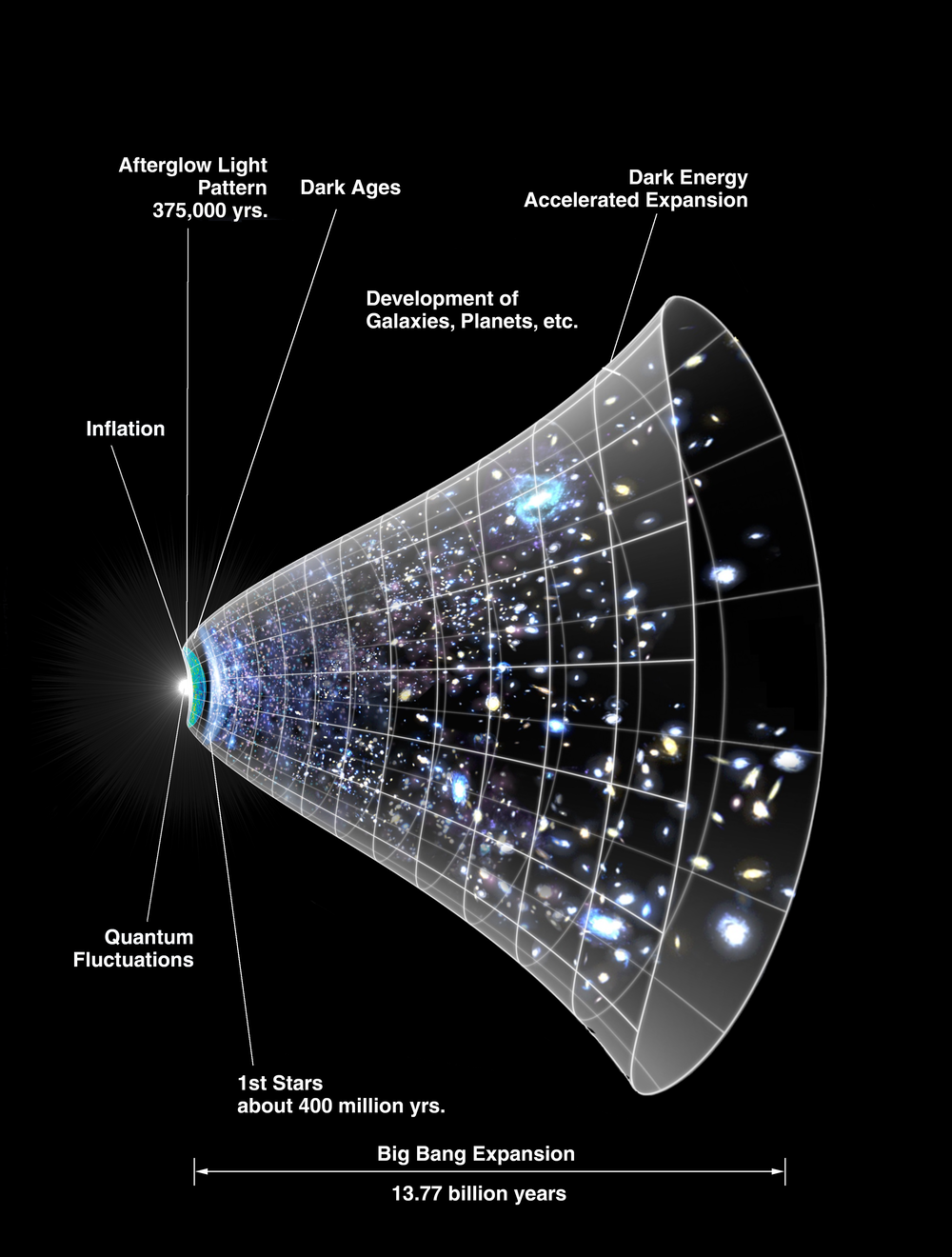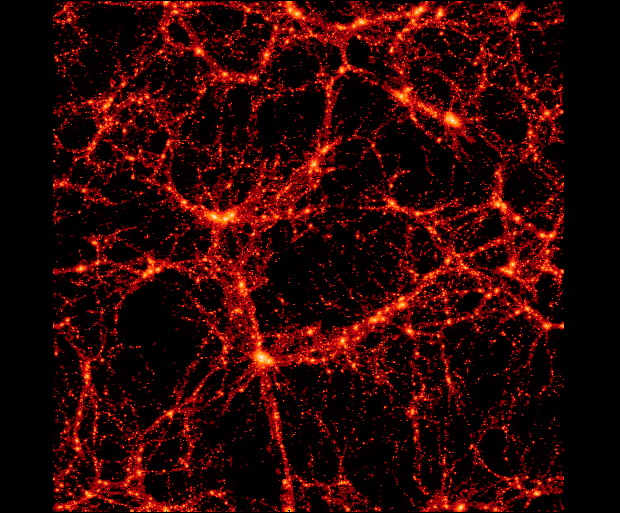Normal relativity has handed one in all its most exact checks ever due to observations of the previous 11 billion years of cosmic evolution collected by the Darkish Vitality Spectroscopic Instrument, or DESI.
Albert Einstein’s 1915 idea, normal relativity, has remained humanity’s greatest description of gravity for the previous 100 years. Cosmologists have used normal relativity to mannequin how the cosmos has developed — from its earliest moments to its present state — and proven how gravity introduced collectively tiny clumps of matter to kind huge galaxies in addition to clusters of these galaxies. But, whereas normal relativity has handed each take a look at utilized to it on comparatively small scales, few checks have challenged it on very giant scales.
Scientists have now carried out one such large-scale take a look at by utilizing DESI. They noticed virtually 6 million galaxies and quasars, that are vivid hearts of galaxies powered by feeding supermassive black holes. Maybe unsurprisingly, this take a look at, which has traced the evolution of the universe because it was round 3 billion years previous, has as soon as once more proven normal relativity to be the suitable “recipe” for gravity.
“Normal relativity has been very nicely examined on the scale of photo voltaic methods, however we additionally wanted to check that our assumption works at a lot bigger scales,” research co-leader and the French Nationwide Heart for Scientific Analysis (CNRS) cosmologist Pauline Zarrouk mentioned in a press release. “Finding out the speed at which galaxies shaped lets us straight take a look at our theories and, thus far, we’re lining up with what normal relativity predicts at cosmological scales.”
Mounted on Kitt Peak Nationwide Observatory’s Nicholas U. Mayall 4-meter Telescope, DESI is a state-of-the-art instrument composed of 5,000 “robotic eyes.” The experiment is now within the fourth yr of its five-year sky surveying challenge, which can ultimately see it observe roughly 40 million galaxies and quasars.
Th sky-survey knowledge might be important for understanding darkish vitality and darkish matter, the mysterious substance that outweighs particles of “on a regular basis matter” that compose stars, planets, moons and the whole lot we see round us on a day-to-day foundation, however stays successfully invisible. Collectively described because the “darkish universe,” darkish vitality and darkish matter means that the whole lot we perceive within the cosmos accounts for simply 5% of its contents.
“Darkish matter makes up a few quarter of the universe, and darkish vitality makes up one other 70 %, and we don’t actually know what both one is,” crew member Mark Maus, a PhD pupil at Berkeley Lab and UC Berkeley, mentioned within the assertion. “The concept we will take footage of the universe and deal with these huge, basic questions is mind-blowing.”
Weighing cosmic ghosts
Normal relativity could also be the most effective description of gravity we’ve, however it could actually’t clarify each single ingredient of the universe that we presently observe, notably the accelerating growth of area and the gravitational impact of darkish matter. The acceleration of area’s growth is presently attributed to a “placeholder” pressure referred to as darkish vitality, which escapes description by cosmological fashions based on normal relativity.
This failure to account for darkish vitality has led some scientists to posit alternate options to normal relativity which can be primarily based on changes to Isaac Newton’s idea of gravity, which Einstein’s magnum opus idea outmoded. These theories are typically known as “modified theories of gravity,” they usually clarify observations of the universe with out the necessity to introduce an unknown, like darkish vitality.
Along with serving to to validate the main mannequin of the universe primarily based on normal relativity, the Lambda Chilly Darkish Matter (LCDM) mannequin, the DESI findings have additionally helped to rule out some theories of modified gravity.

Moreover, the identical outcomes from DESI have helped to position an higher restrict on the mass of so-called “ghost particles,” or neutrinos.
Neutrinos get their repute because the phantoms of the particle zoo due to their lack of electrical cost and the actual fact they’re nearly massless. As you learn this sentence, trillions of those particles have streamed by way of your physique at near-light pace, remaining undetected.
Neutrinos are the one basic particles we’ve found whose plenty haven’t been exactly outlined by scientists. Whereas earlier experiments outlined neutrinos’ decrease mass, the DESI outcomes set an higher restrict, giving researchers a extra well-defined mass vary inside which neutrinos ought to dwell.

The brand new outcomes come from an prolonged evaluation of the primary yr of DESI knowledge, launched in April 2024. This knowledge shaped the most important 3D map of the universe created up to now. These outcomes had been already exceptional as a result of they appeared to point out that the energy of darkish vitality is altering over time.
The April DESI outcomes centered on an element of galaxy clustering referred to as baryon acoustic oscillations (BAO) oscillations in matter density that permit large-scale buildings to develop. This new examination of those outcomes included what researchers name a “full form evaluation,” which additional examined how galaxies and matter are distributed on completely different scales all through area.
Additional outcomes from the second and third years of DESI operations are anticipated to be launched in Spring 2025.
“Each our BAO outcomes and the full-shape evaluation are spectacular,” analysis co-leader Dragan Huterer from the College of Michigan mentioned within the assertion. “That is the primary time that DESI has seemed on the development of cosmic construction. We’re exhibiting an incredible new capacity to probe modified gravity and enhance constraints on fashions of darkish vitality. And it is solely the tip of the iceberg.”
The DESI outcomes are described in a number of papers which had been revealed on the analysis repository web site arXiv on Tuesday (Nov. 19).





